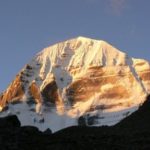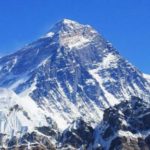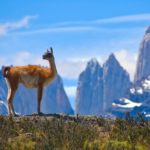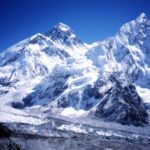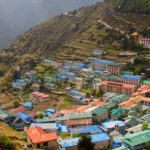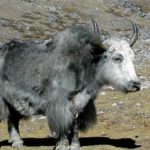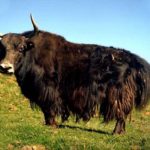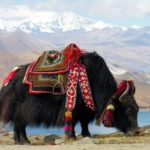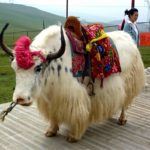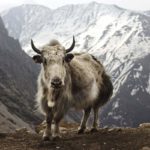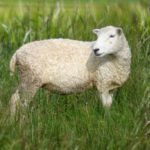Travel to Tibet
 Tibet is a mysterious mountain country in the heart of Asia. The area of Tibet is 1.2 million km. average elevation is 4,000 meters above sea level. The capital of Tibet is Lhasa. For about 5,000 years, an independent Tibetan state existed. For over 500 years Tibet has been the center of Buddhism, and all this time it has been a closed country. Units of Europeans were able to get there and come back alive.
Tibet is a mysterious mountain country in the heart of Asia. The area of Tibet is 1.2 million km. average elevation is 4,000 meters above sea level. The capital of Tibet is Lhasa. For about 5,000 years, an independent Tibetan state existed. For over 500 years Tibet has been the center of Buddhism, and all this time it has been a closed country. Units of Europeans were able to get there and come back alive.
In 1950, as a result of the fighting, Tibet was conquered and annexed to China. It is believed that to learn, understand and imagine Tibet is impossible if you have not been there even once. It is believed that Tibet does not go just to rest, that in order to travel to this mysterious country, it is necessary to mature. If you do decide to visit Tibet, you need some of the information provided here.
Tibet is a picturesque colorful area located in central Asia. Tibet as a separate state appeared only in the seventh century of our era. Until that time, this country was in the power of the Mongols. In the ninth century, Tibet was conquered by China, under whose yoke it remains to this day. In 1792, Tibet became a closed state, inaccessible to foreign nationals. Everyone except the Chinese. Tibet became open to tourists only in 1984. Nine years, from 1950 to 1959, there was a guerrilla war in Tibet. Over the years, over ninety thousand indigenous people of Tibet have been killed.
Only 1965 an autonomous region is created in the country. More than once, the UN has turned its attention to human rights violations in Tibet. The Communist Party of the People’s Republic of China has an extremely destructive effect on the culture and population of the country. There are global migrations of Native Chinese to Tibet. Today we can say with confidence that the Tibetan nation is on the verge of complete disappearance from the face of the earth.
The historical center of the country is Lhasa. In this city you can see monasteries, wonderful temples and palaces. Today, the population of the capital of Tibet is about one hundred and seventy thousand people.
When traveling to Tibet, a tourist should take into account that the possibilities of credit cards in this country are severely limited. Therefore, it will be prudent to travel in cash. Renminbi in translation actually means the money of the people or the people’s money. The monetary system of the country is as follows: one yuan contains ten Jiao, and Jiao contains ten Fyn.
When traveling to Tibet, a tourist needs to know that this country belongs to the Buddhist religion, as well as to the religion called “Bon”. The whole life of the indigenous Tibetans is under the influence of religion. Tibetans are peaceful and friendly people, sometimes very curious. Mainly engaged in agriculture, as well as animal husbandry. Literate people among the Tibetans are very few. A total of fifty percent of the total indigenous population of the country are considered educated. The first schools in the country appeared only in the nineteenth century.
In Tibet, officially eight holidays. Often during their various festivals are held. In total, there are about one hundred and fifty festivals in the year Each of them is distinguished by colorful, theatrical clothes, brightness and singularity. When visiting this country, the tourist should know that the climate here is extremely dry. Therefore, it is recommended when walking always have at hand water.
During the day it is very hot in Tibet, and it is better to wear lightweight clothing. But Tibetan nights are very cold and suggest warm clothes.
In the mountains of the country is very high percentage of ultraviolet radiation. Therefore, when visiting these areas, the tourist should stock up on a protective cream and clothing that hides most of the body.
By the way, in Tibet is Mount Everest, which is the highest mountain in the world, as well as the famous mountain Kailas.
Contrary to common custom in most civilized countries to leave a tip, Tibet has a negative attitude towards this. Tips can be given only in exceptional cases. For example, a person who helps to bring things or masseuse.
Sunday in this state is a day off. On weekdays, shops usually work from 9.00 to 17.30. There is a lunch break from 12.30 to 14.30.
If you are going to spend your holidays in Tibet, tourists should know that the air temperature in July in the country is about fourteen degrees, and in January minus four degrees. Tibet is rightly called the solar edge. The best climate in Tibet in the cities of Lhasa, Shigatse. In the north of the country is always cold, the temperature is below zero.
The official language in the country is considered to be Chinese, but often things are done in the native language, Tibetan. And in lower grades, schools are also taught in Tibetan. In high school teaching the transition to Chinese.
In Tibet, about two hundred monasteries for men and two hundred monasteries for women. More than twenty thousand monks live there permanently.
Tibet is interesting for its folk medicine, as well as for the monastic medicine.

